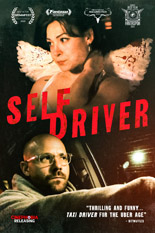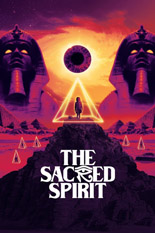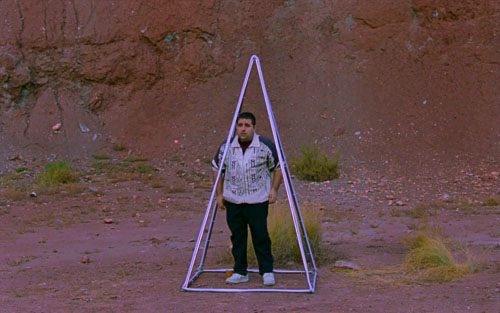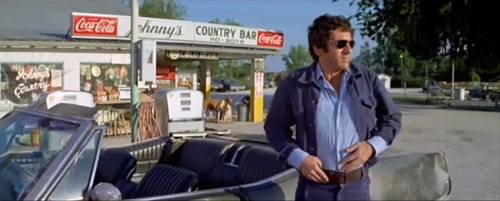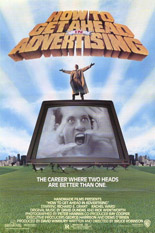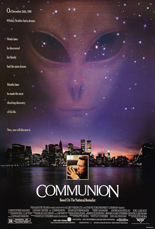

Surrounded by the detritus of ever-accumulating fast-food wrappers, rideshare driver D — just D, thanks — might be the saddest bastard of all the freelance motorists on the Vrmr app. He’s behind on rent and utilities, and has a new mouth to feed at home. With each trip to the tank running him $90, he can’t get ahead, no matter how many hours he puts in on the road.
Enter a passenger (scene-stealing Adam Goldhammer) who reps a competing startup app, promising D (Nathanael Chadwick, The Last Porno Show) earnings of thousands a night driving for them. It doesn’t require a fancy car — just utmost discretion and following orders to a T, lest D lose $50 per missed command.
If you assume taking the job makes D complicit in criminal activity and abhorrent behavior, well, duh! And therein lies Self Driver’s fun, as D tools around town, running dubious errands and picking up questionable fares, all while Antonio Naranjo’s score nearly wraps tension into White Lotus-tight knots. With the script’s one-crazy-night setup, writer/director (and editor) Michael Pierro grants his first feature a significant After Hours vibe, right down to its Möbius-strip end, although leans more into the lane of danger.
If only D were a quarter as likable as Paul Hackett. Sure, Griffin Dunne’s character in that Martin Scorsese black comedy lived in a buffer bubble of yuppiedom, but he wasn’t an asshole by trade. That’s my one nagging issue with the otherwise impressive Self Driver: Its protagonist is a full-time asshole. D’s rude to customers; his car is a pig sty; he urinates in public — none of which endear us to him the way abject poverty alone would.
Still, as D, Chadwick is well-cast. So are all the actors portraying riders of varying sanity and sobriety who flit in and out of his backseat until day finally breaks. Among them, Christian Aldo and Catt Filippov (both Last Porno vets) stand out as, respectively, a high-strung drug dealer and an enigmatic young woman bearing angel wings. I know, I know: That last one seems like a metaphor so on-the-nose, you can taste the Afrin drip. But before that can happen, Pierro’s indie takes a major turn you won’t anticipate. —Rod Lott

